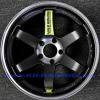Announcements
-
Similar Content
-
Latest Posts
-
By The Skyline Guy r34 · Posted
Does anybody know the weight of the flywheel for the Nismo twinplate coppermix clutch kit for bnr34 over the standard flywheel? Is it a dualmass flywheel like oem or single mass? -
Connected to plenum towards the rear end. Yes, absolutely required for the ECU. Even Nistune can't save you if you don't have it.
-
By DraftySquash · Posted
Can confirm solenoid makes no difference. I finally removed the solenoid and the wire off my engine loom and there is no issue with boost. Keep in mind, this is the solenoid, and I've got a Nistune. After the boost controller, I ran the car for a day with the solenoid unplugged - no issue. So then I just ripped the whole thing out. Like @GTSBoy mentioned before, the ECU just sends an earth signal for the 2-stage boost. And looking at the wire going into the solenoid, that just had 2 standard wires and did not look important 🤣 As for boost sensor: I saw somewhere that the vacuum line the gauge uses is at the back of the engine on the driver side. I never touched that but assume ECU uses that??? (maybe? Just assuming) -
I still remember it trying to rip the steering wheel out of my hand when I put it into a 4wd power slide lol
-
Im also amazed how well Attessa holds up to all of the abuse. Especially with the burnouts and crap you guys used to do at Texi!
-







Recommended Posts
Create an account or sign in to comment
You need to be a member in order to leave a comment
Create an account
Sign up for a new account in our community. It's easy!
Register a new accountSign in
Already have an account? Sign in here.
Sign In Now